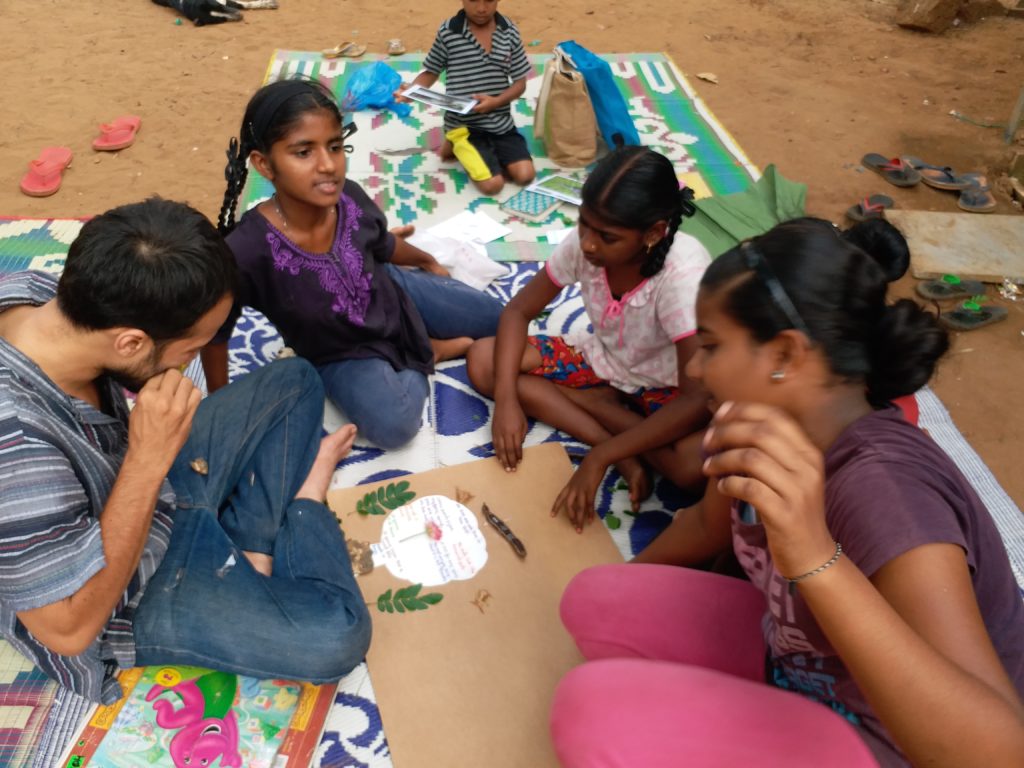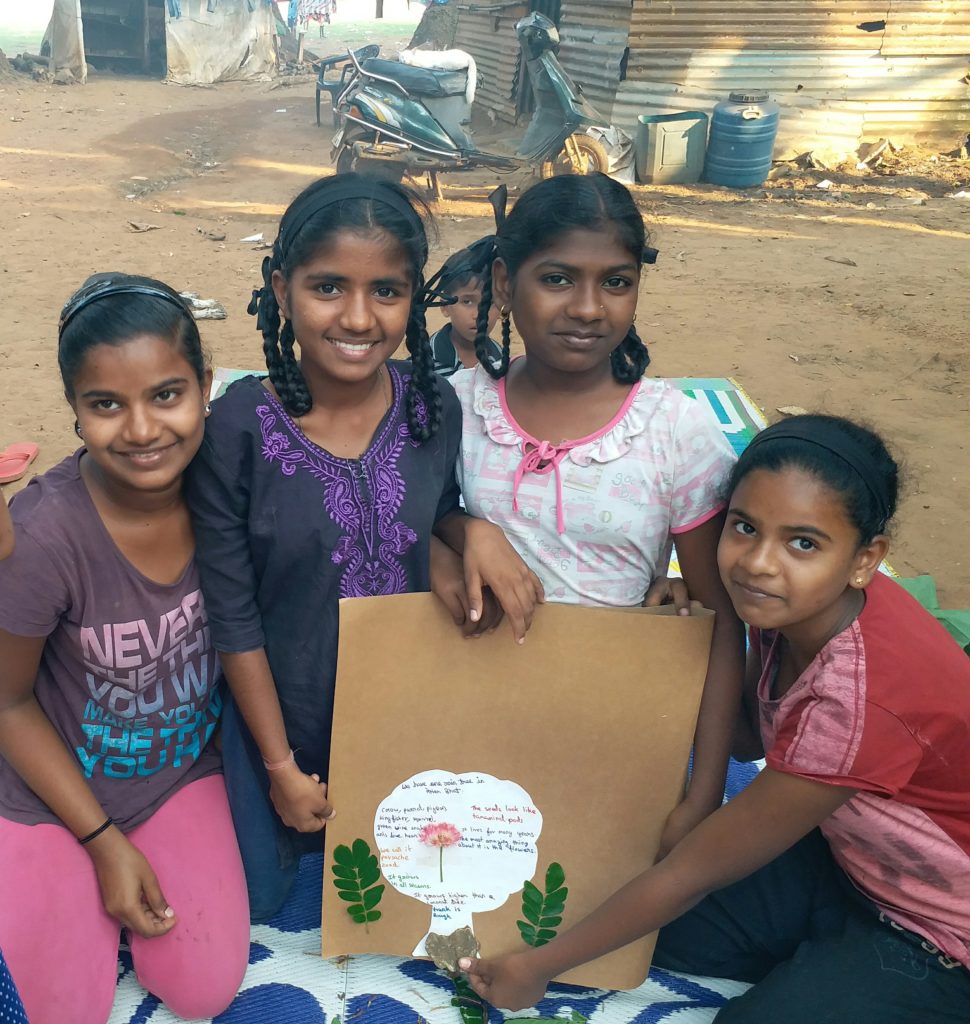Being new to the Peter Bhatt site, planning for the session held a two-fold challenge. Retain the existing girl’s interests, as well as try to draw in the boys, who prefer to play outdoor games.
The previous session offered a clue to which type of book could be appropriate. The children were distracted (in a good way), by a squirrel on a Rain Tree directly in front of them (facing them) and behind my back.
I like this site. It is one with the earth – no walls or roof. We sit on the mud packed floor together, library children and I. The sky is our roof, the trees, birds and others our surroundings.
The Coral Tree (Botanical name: Erythrina indica), blooms at exactly this time of the year- February, March.
A nonfiction book of the same name by Mamata Pandya offers an opportunity to learn about the tree and its relationship with humans, birds and animals.
Perfect!
As we were browsing through some nature books before the Read Aloud, the senior girls took Wanya (a Resource Person) and me to see weaver bird nests on a coconut tree nearby and we discussed how the male bird builds these nests to charm the female. A lot of discussion took place about the various types of birds and trees they could see.
Clearly the children have been observing the surroundings. This offered some learning for me, who did not notice so many Coral Tree’s on my way from home to Bookworm, until this day.
I had stopped along the way earlier in the morning, to pick up some flowers to show the children (they look like bright red tiger claws). The children touched these flowers and it cleared their doubts, that the Coral Tree is not the same as the Red Silk Cotton Tree which also gets red flowers of a different shape (and one of these is at the MOP site as well).
The children found the book engaging and could relate to the things they see around them every day. They spoke much more than the text in the book. Sonia said she had a tree friend too and did not think it was absurd to have a tree friend!
They internalised the facts and figures with much interest, like that there were 100 different types of Coral Tree or that the leaves were heart shaped. The end leaf of the book has even more information on the Coral Tree and the children were keen to hear it all. Some who knew other languages learned the name of the tree in that language and yet they wanted to know what it was called in every other language listed on the book.
Later we went out to the Rain tree (which Wanya helped identify by name, the children called it Pavsache zaad- a literal translation) and picked up the pods which were looking somewhat similar to that of a Coral Tree. Without realizing it, the children had been observing the Rain Tree around the year and knew much about it, like how the pods fall to the ground and turn black and that the pink flowers make the tree look most beautiful. We picked up bits of bark, leaves and dry flowers that were on the ground and prepared a Tree Diary display, an activity suggested at the end of the book.
While the girls were surely won by this book, the boys were still skeptical and were only helpful by collecting some leaves and flowers for the display.
At the end of it, we had silently acknowledged our friendship with the Rain Tree at Peter Bhatt. “You come here any time of the year and this tree will always be green”, the children said. I hope to keep going back.




